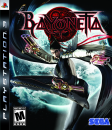

Centering around gruff bike messenger-turned-reluctant superhero Cole McGrath, inFamous is fun enough as a free-roaming romp, but it’s disappointingly full of rough edges. Disappointing mainly because it comes from Sucker Punch, a studio from which we’ve come to expect great things after the mostly stellar Sly Cooper series. Maybe it’s our fault for setting our expectations too high, but what we hoped would be a great game ended up being just good.
Still, “good” is definitely worth your time, and inFamous has a lot of cool things to offer. The game opens with the apparent terrorist bombing and subsequent military quarantine of Empire City, a town that feels like a cross between New York, Seattle and a massive hobo camp. Caught at the epicenter of the blast, Cole not only survives, but gains electrical superpowers in the bargain.

Above: One of those superpowers is the eventual ability to grind on power lines, which is awesome
He’s not the only one, either, and in the lawlessness following the disaster, Empire City’s been carved up by three huge street gangs led by supervillains called “Conduits.” Conduits range from hulking brutes who roam alongside the regular, interchangeable gun-toting gang members (and who, in later stages, can become gigantic or create robotic exoskeletons) to the game’s bosses, all of whom share a connection to a secret society called the First Sons.
With the city engulfed in chaos, it isn’t long before Cole’s pressed into service by the FBI, who want him to find a mysterious object called the Ray Sphere – oh, and if he could also single-handedly return order to the city, that would be just swell.
Above: Much has been made of inFamous’ slick “graphic-novel” cutscenes - here’s one from just after the third mission
At Cole’s disposal is a roster of electrical superpowers that gradually expands as he restores power to the city. Starting out with little more than a quick lightning blast and the ability to heal yourself by leeching power from anything that carries a charge, you’ll rapidly earn new abilities, many of which mimic the functions of guns in other games. Precision, for example, enables you to zoom in on enemies (and slow time) with sniper-like efficiency, while Shockwave is a concussive, shotgun-like blast that can also deflect missiles. The Megawatt Hammer works like a ball-lightning rocket launcher, the advanced Lightning Storm is basically a laser-satellite strike and the Shock Grenades stick to enemies, which is hilarious.

Above: You’ll probably end up relying on Precision a lot
You’ll be able to upgrade these powers differently depending on the choices you make in the game. Every so often, you’ll be confronted by a moral dilemma – rescue a lynching victim, or ignore him? Help a dying man, or step over his body and steal his treasure? – and your choice will affect your Karma meter. Karma’s also earned or lost dynamically by doing things like healing civilians (you’re a walking defibrillator, after all) or blowing up moving vehicles. Speaking of which, be warned: if you’re trying to be a good guy, keep a careful eye out for puddles. Electricity plus puddles equals people die.

Above: Oops
Make heroic choices and avoid unnecessary murder, and not only will you get helpful, power-boosting upgrades, but the citizens will rally to cheer you on and even throw rocks at your enemies. Err too heavily on the side of selfishness, however, and you’ll become a twisted Sith lord who shoots red lightning bolts, gets explosive upgrades and inspires terror and disgust everywhere he goes.

Above: Also you can suck the life energy from civilians
As for the “restoring power” part we mentioned earlier, that’s actually a pretty clever idea. Not only are the game’s second and third islands blocked off until chapter-ending boss fights open them up, but Cole is effectively barred from wandering into certain neighborhoods while the power is out. See, without an active electrical grid, Cole’s powers weaken, his vision goes blurry and he loses his ability to heal. And because these areas are always swarming with enemies, wandering into them without a reason is an excellent way to die quickly.
So instead, Cole has to wait until he gets an order from his FBI handler to restore power to an area, at which point it’s time to delve into the sewers (did we mention deep water is deadly to Cole?) to hunt for power substations and turn the juice back on. Once that’s done, he’ll be granted a new ability, and a new area of the map will be made safe to explore.

Unfortunately, actual exploration is the weakest part of the game, mainly because Empire City itself just isn’t that interesting. Sure, it’s pretty cool to bounce around on buildings at first, and once you’ve unlocked the second island, the number of fascinating and bizarre landmarks shoots up significantly (and includes a couple of huge, crumbling ruins that are a blast to climb).

Above: OK, getting up here is kind of fun
But in the main, it’s often difficult to tell which part of the city you’re in without checking the map. Few of the neighborhoods really have a distinct look or character, the miles of waterfront all look mostly identical and several of the city’s plazas and alleyways are similar enough to feel like they were rubber-stamped into the world. And with cars off-limits, there’s no rapid way to travel from one end of the city to the other apart from grinding on power lines or train tracks, or climbing up somewhere high and then gliding slowly to the ground. While those are both a lot faster than walking, they'll still take a while to get you where you need to go.
It also doesn’t help that Cole’s “parkour” ability is limited to leaping between handholds and climbing narrow objects, or that the controls for this are kind of clumsy. InFamous has a well-intentioned automatic lock-on feature that, at its best, makes platforming a relative breeze by keeping you from accidentally missing a jump or walking off a ledge. It’s great when it enables you to do stuff like leap effortlessly from the roof of a skyscraper to a grindable power line, but it just as often leads to Cole getting accidentally stuck on narrow ledges (which can be fatal in a firefight) or gravitating toward walls or poles that just happen to be closer than whatever you’re actually trying to jump to.

Above: Man, look at all that jumping Cole had to do
If we hadn’t already played Assassin’s Creed, The Incredible Hulk: Ultimate Destruction or any of the Spider-Man games, we might be amazed by inFamous’s superpower-enhanced exploration. But we have. So we’re not.
On top of that, the constant threat of marauding gang members shooting at you means you’ll have to stick to the rooftops out of necessity, because walking around on the ground usually means getting perforated by snipers. On the other hand, being in constant danger gives you an excellent reason to take on side missions, which in turn “free” chunks of the city and (in theory) make them off-limits to enemies.
By “in theory,” we actually mean “don’t.” Encounters with enemies will definitely be sparser in those neighborhoods, but they’ll still show up, even if you’ve liberated 100 percent of a given island. Maybe that’s not such a bad thing - Crackdown got kind of boring once you’d squashed all the gangs, after all - but it’s weird that the game explicitly promises no enemies and then continues to pump them out anyway.

Above: These guys stick around no matter what
Issues with exploration aside (although they’re pretty big issues), inFamous still has a lot of cool stuff to offer, most of it in the form of its 40 story missions. These involve anything from the aforementioned sewer-diving, to defending a prison from a protracted siege, to hunting Predator drones and giant, shielded hot-air balloons. And then there are the boss fights, which are elaborate, memorable and fun, although the game really could have used more than three of them.

Above: MOAR PLZ
The story is padded out with a slew of short, neighborhood-clearing side missions, which range from awesome (following psychic echoes to find murderers, blowing up armored buses) to tedious (following couriers without being seen, clearing surveillance devices from building exteriors, escorting prisoners for the cops). The tedium tends to outweigh the awesome, but the missions are short enough that you probably won’t notice until around the third or fourth time you’re asked to do a variation on the same busywork task.
The story that supports the action is pretty compelling, too, and hides a few genuinely surprising twists. It’s worth noting that your good/evil decisions don’t have any real bearing on its direction, though; the cutscenes play out a little differently depending on your alignment and choices, but the end result is usually the same. You can also glean a little more narrative through “Dead Drops,” one of the game’s two types of hidden collectibles (the other being “blast shards” that can extend your power meter). These are short recorded messages left by John, a federal agent who’s infiltrated the First Sons, and they gradually reveal the events leading up to the cataclysmic blast that plunged Empire City into ruin.

Additionally, you’ll get to watch dueling newscasts, which will air when you’re near TVs at certain times. One’s from a pirate broadcaster, who thinks you’re a terrorist and credits your achievements to “a group of concerned citizens.” The other’s from a smarmy mainstream news anchor, who dismisses your existence and openly praises the government for your acts of heroism. Both are equally infuriating, and both are apparently meant to illustrate how quickly misinformation can spread in a crisis.
Is it better than...?
 Spider-Man: Web of Shadows
Spider-Man: Web of ShadowsYes and no. InFamous is better made, more coherent and less silly than Web of Shadows and its weirdly inappropriate good/evil choices, but swinging past Manhattan’s skyscrapers as Spidey is a thrill that has yet to be topped. Grinding on rails and gliding, while fun, don't even come close to delivering the same feeling of freedom.
 Crackdown
Crackdown
Comparing these two is probably asking for trouble, but it’s inevitable nonetheless. InFamous is structured similarly to Crackdown, and the two seem tailored for each console’s perceived audience: Crackdown is all shooting, driving and almost no story, while inFamous piles on the narrative and substitutes magic superpowers for weaponry. Ultimately, Pacific City is a little more fun to explore than the ruins of Empire (especially if you’re driving), but inFamous’s diverse powers, karma system and story make it a more rewarding experience.
 Prototype
Prototype
It’s normally not our policy to compare a game that’s been reviewed to a game that hasn’t, even when the latter is just weeks away from release. However, the few hours we’ve spent playing Prototype have already been considerably more enjoyable than huge swaths of inFamous. To be fair, the two are different beasts – Prototype is balls-out chaotic and amoral, while inFamous takes a more thoughtful, deliberate approach to being a hero – but sprinting up walls and devouring civilians in Manhattan is a lot more fun than hopping around on rooftops in Empire City. Having the option to use vehicles and guns certainly doesn’t hurt, either. Our advice? If you can only afford one, save your money.
Just for you, Metacritic!
InFamous shows huge potential, but it’s ultimately held back from greatness by too-sticky controls and its surprisingly bland ruin of a city. It’s still fun, but there’s a lot of room for improvement in the strongly hinted-at sequel.
May 22, 2009

- Cutscenes and story are striking, well-written
- Powers are fun to play around with
- Good-evil choices mean more replayability
You'll hate
- First half starts strong, then kind of plods
- A lot of the side missions are repetitive busywork
- Empire City just isn't much fun to explore































 Next Gen
Next Gen 
































